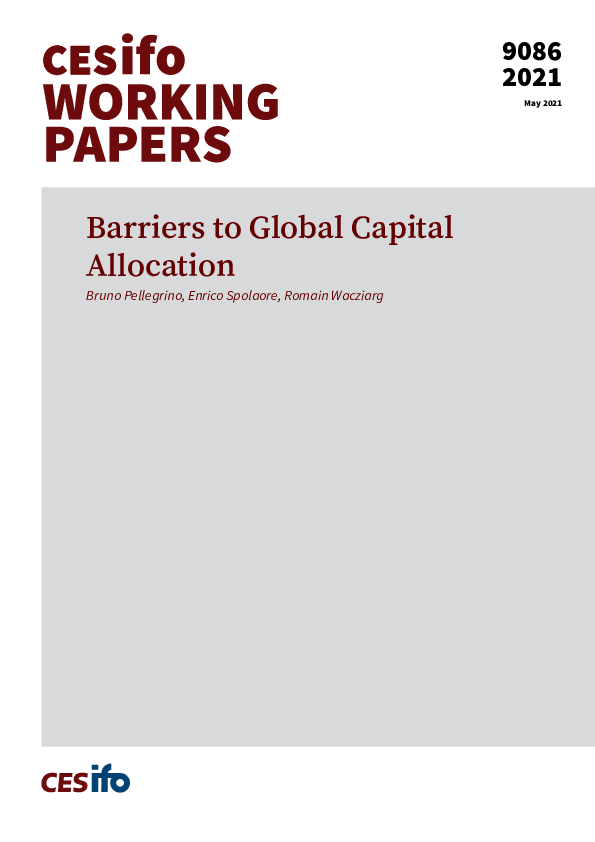Barriers to Global Capital Allocation
CESifo, Munich, 2021
CESifo Working Paper No. 9086

We quantify the impact of barriers to international investment, using a novel multi-country dynamic general equilibrium model with heterogeneous investors and imperfect capital mobility. Our model yields a gravity equation for bilateral foreign asset positions. We estimate this gravity equation using recently developed foreign investment data that have been restated to account for offshore investment and financing vehicles. We show that a parsimonious implementation of the model with four barriers (geographic distance, cultural distance, foreign investment taxation, and political risk) accounts for a large share of the observed variation in bilateral foreign investment positions. Our model predicts (out of sample) a significant home bias, higher rates of return on capital in emerging markets, as well as “upstream” capital flows. In our benchmark calibration, we estimate that the capital misallocation induced by these barriers reduces World GDP by 7%, compared to a situation without barriers. We also find that barriers to global capital allocation contribute significantly to cross-country inequality: the standard deviation of log capital per employee is 80% higher than it would be in a world without barriers to international investment, while the dispersion in output per employee is 42% higher.
Monetary Policy and International Finance
Empirical and Theoretical Methods